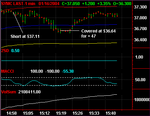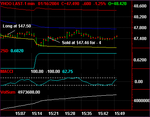Grey1
Senior member
- Messages
- 2,190
- Likes
- 210
MR CHART ,
I am not attacking you .. I Simply donot think you should be preaching what you dont understand .. As I said before when every body was attacing you I was quite..
My interest is in your technical views which you choose NOT to reply .. Donot you think you owe that to the members of this BB
to simply explain why u think ADBE had a LOW RS when you simply donot use historical evidence ? ( ADBE is up by 46C while DOW only risen 13 points )
If you choose not to reply to my technical question then I wont bother you .. I am sorry being aggressive towards you , this is the habit I have picked up being an X- research fellow in the finance industry ..
Regards
I am not attacking you .. I Simply donot think you should be preaching what you dont understand .. As I said before when every body was attacing you I was quite..
My interest is in your technical views which you choose NOT to reply .. Donot you think you owe that to the members of this BB
to simply explain why u think ADBE had a LOW RS when you simply donot use historical evidence ? ( ADBE is up by 46C while DOW only risen 13 points )
If you choose not to reply to my technical question then I wont bother you .. I am sorry being aggressive towards you , this is the habit I have picked up being an X- research fellow in the finance industry ..
Regards
Last edited:


